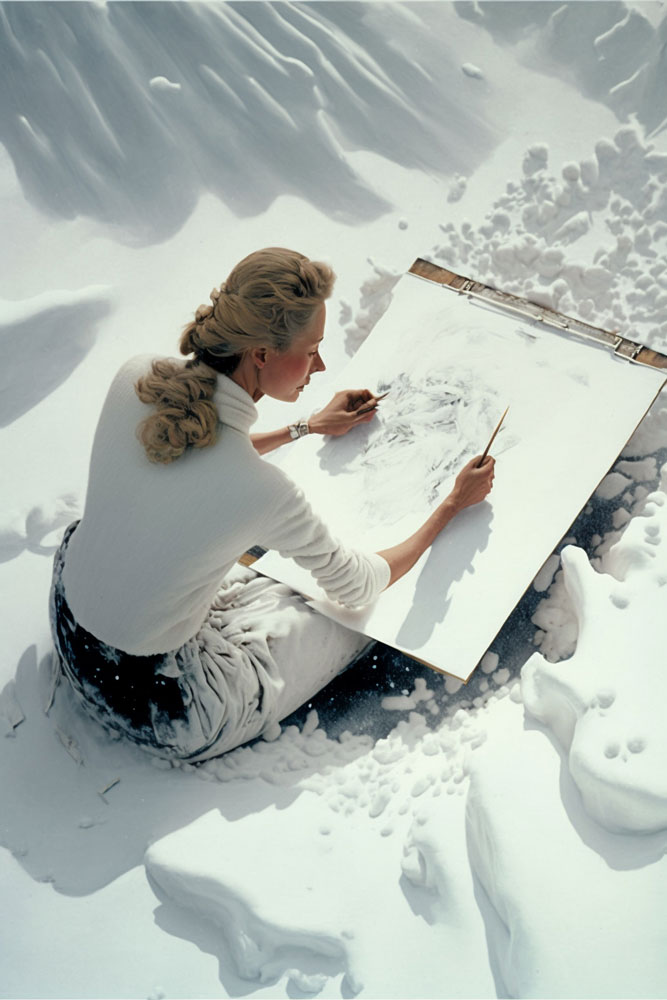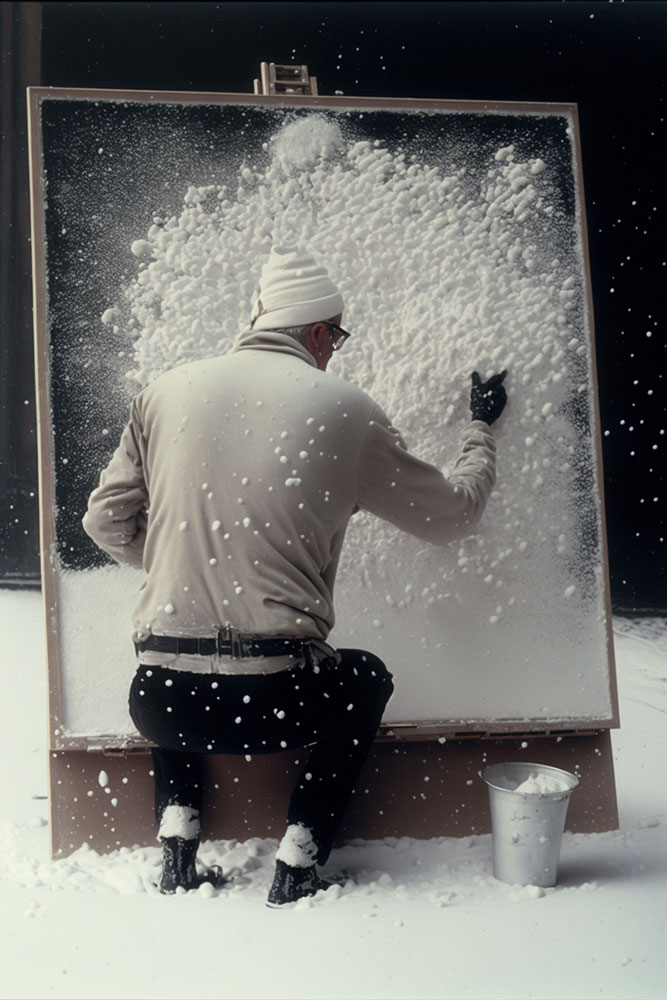Visual artist born in China, she completed her MFA education at the School of Visual Arts. Song’s creative practice primarily focuses on photography, video, and 3D animation. Through her works, she explores and expresses a range of emotions and feelings.
Shanghai, China
@real_songlu | www.songlu.info
INTERVIEW
We often ask the question of how the creative path began. Tell us about your beginning – why did you decide to look for yourself in the School of Visual Arts?
Art has always been a driving force in my life, fueled by an innate desire to create something that is entirely new and unique. From an early age, I knew that I had a passion for making things that people had never seen before. As I grew older, I became increasingly drawn to the medium of photography, which allowed me to explore my visual sense and express my ideas in a way that felt true to me.
When I enrolled in an MFA photo program at the School of Visual Arts, I knew that I was embarking on a journey that would allow me to explore a variety of different media. Over the course of three years, I experimented with photography, video, and 3D animation, all in pursuit of the perfect way to express my ideas and bring my concepts to life. The process of taking something from a mere concept in my mind to a tangible piece of art was exhilarating, and I felt truly fulfilled by the work that I was doing. There is nothing else in the world that compares to the feeling of creating something from scratch and seeing it come to life before my very eyes. For me, being an artist is not just a job or a hobby – it’s a way of life, and I am grateful every day for the opportunity to pursue my dream.
Song, please tell us about the topics you work with and your concept. What questions do you raise in your work?
The “Snow Drawing” series originated from my fascination with the potential of AI-generated art. The idea came to me after I made my first attempt at using AI-generated images in the winter of 2022. I stumbled upon a popular AI tool for generating images, which immediately caught my attention.
As an artist, I was intrigued by this new technology and wanted to experiment with it to create images that I could not produce on canvas in the real world due to a lack of snow in my city.
I wanted to use AI to bring my imagination to life. I used the prompt “an artist uses snow as a material to draw.”
However, I found the results produced by the AI system to be intriguing. During the process, I noticed that the AI system exhibited a bias toward assuming that the “artist” was always an old white man. This only changed when I included words like “young” or “female” in my prompts.
Even when I identified myself as an artist in this art world, I don’t see the AI model including my gender as a woman and my background as an Asian in its definition of an artist. This issue raises questions that I want to explore.

Tell us what inspires you. Are you a fan of the old masters or a fan of modern art?
When it comes to what inspires me, I would say that I draw inspiration from my daily life and experiences. As an artist, my approach to art is intriguing, as it seems to be constantly evolving as I experience new environments and emotions. I had the opportunity to live in New York City for a few years, and this experience greatly impacted my work. I plan to return to New York soon to create more work related to the feelings I experienced while living there.
When it comes to my preference for art, I do not have a specific preference for either old masters or modern art. I appreciate and respect the work of both. What I love most is art that really touches my heart and evokes an emotional response. One artist who has greatly influenced my work is Rene Magritte. His surreal and thought-provoking paintings have always resonated with me, and I am constantly inspired by his use of juxtaposition and symbolism. I also admire the work of Lucas Blalock, whose photographic collages challenge our perceptions of reality and encourage us to question the world around us.
I like the variety of media you use in your art. How does video, photography or animation help you in your creativity? Why did you choose such mediums?
During my MFA program, I have had the opportunity to work with photography, video, and related media, and I have found that each medium has its unique strengths and limitations. This has allowed me to develop a versatile skill set and explore different ways to convey my artistic vision.
Personally, I prefer video as my medium of choice as it allows me to incorporate movement and sound to create an immersive experience for viewers. I find that looping videos with minimal sound are particularly effective in creating a sense of endless beauty and intrigue. However, I am always open to exploring new mediums and experimenting with different techniques to further expand my artistic expression.
I would like to know more about your work, especially the video work “Love” and the “Snow Drawing” series. They are very catchy with their originality! What inspired you?
“Love” is a loop video that employs the movement of two matches to symbolize the connection between human breath and the concept of love. Inspired by the principles of Minimalism and Conceptualism, I created a unique and intriguing juxtaposition between these seemingly disparate elements, resulting in unexpected yet aesthetically captivating imagery. Through my work, I invite viewers to contemplate the complexity of human emotions and the subtle connections that exist between seemingly unrelated concepts.
The “Snow Drawing” series is another project that I’ve been working on. I used an AI generator called Midjourney to create these pieces. However, I found it difficult to define an “artist” identity through AI, as it tended to produce images of older, Western men. This changed when I added prompts for “young” or “female” artists. It’s clear that there’s a need for more diversity in the art world, and this extends to the language we use to describe artists and their work.

A traditional question in our magazine – what would you advise young artists?
My advice to young artists would be to open their minds and try new things. It’s essential to pay attention to the world around us and to look back into our inner world to explore ourselves. Finding a topic or theme that speaks to you and continually calling back to it can be incredibly beneficial in developing your artistic voice and style.
Creating art is not always easy, and it requires hard work and dedication. Practice every day, whether it’s sketching, painting, or experimenting with different mediums, can help improve your skills and develop your unique style.
Furthermore, it’s essential to build a network of like-minded individuals, whether it’s fellow artists, mentors, or critics. Engaging in art communities can provide valuable feedback, support, and opportunities to showcase your work.
Lastly, I would suggest not being afraid to take risks and embrace failure as part of the artistic process. Pushing boundaries and experimenting with different techniques can lead to unexpected and exciting results. The journey is as important as the destination.